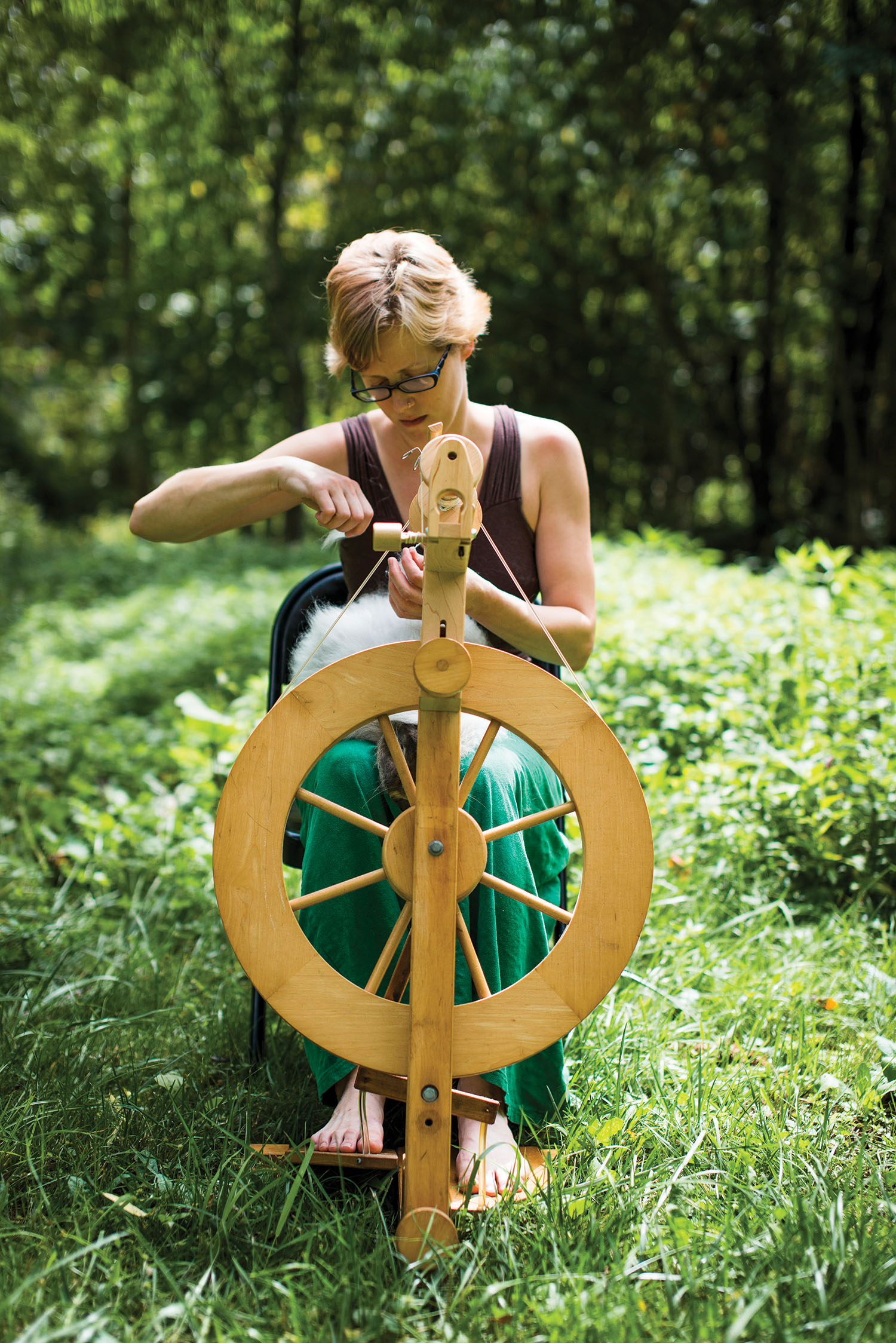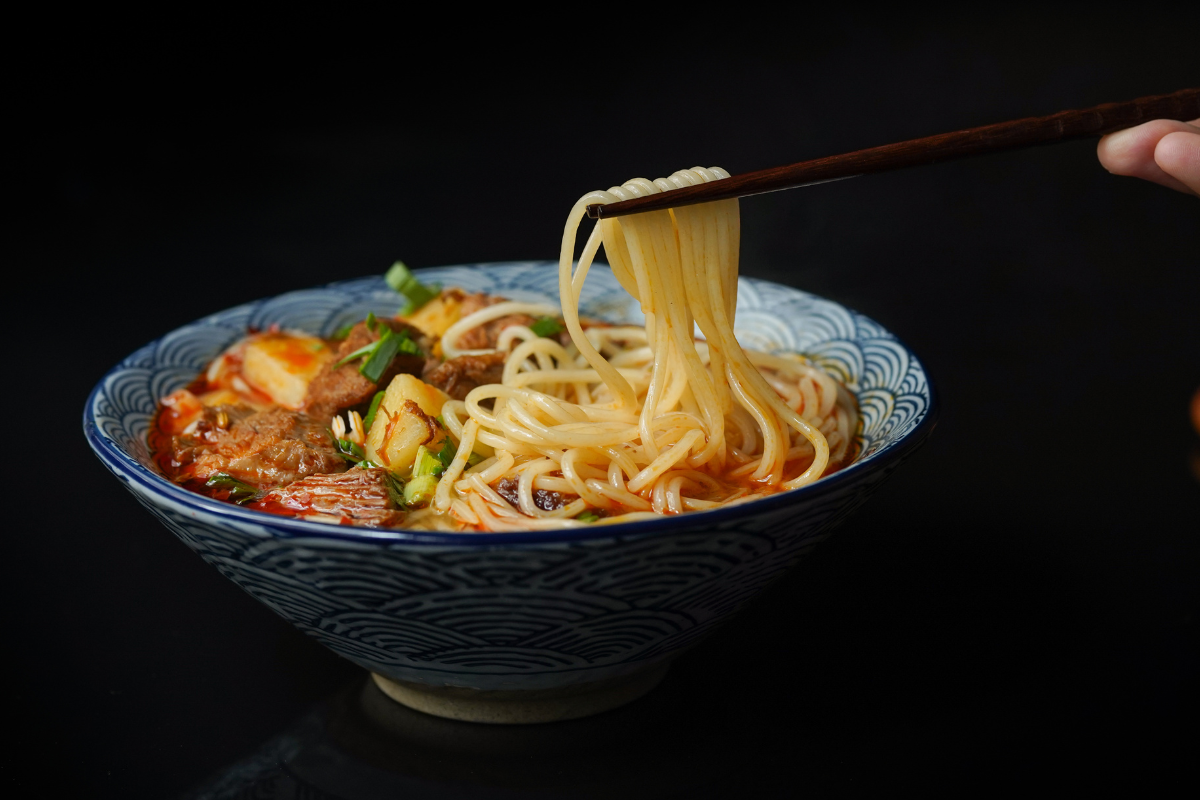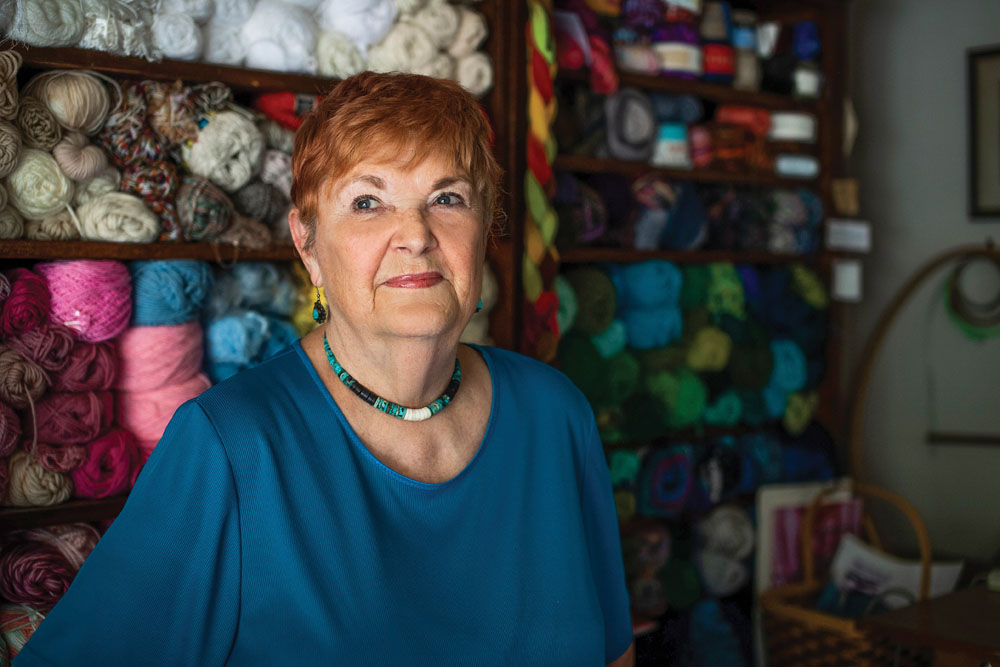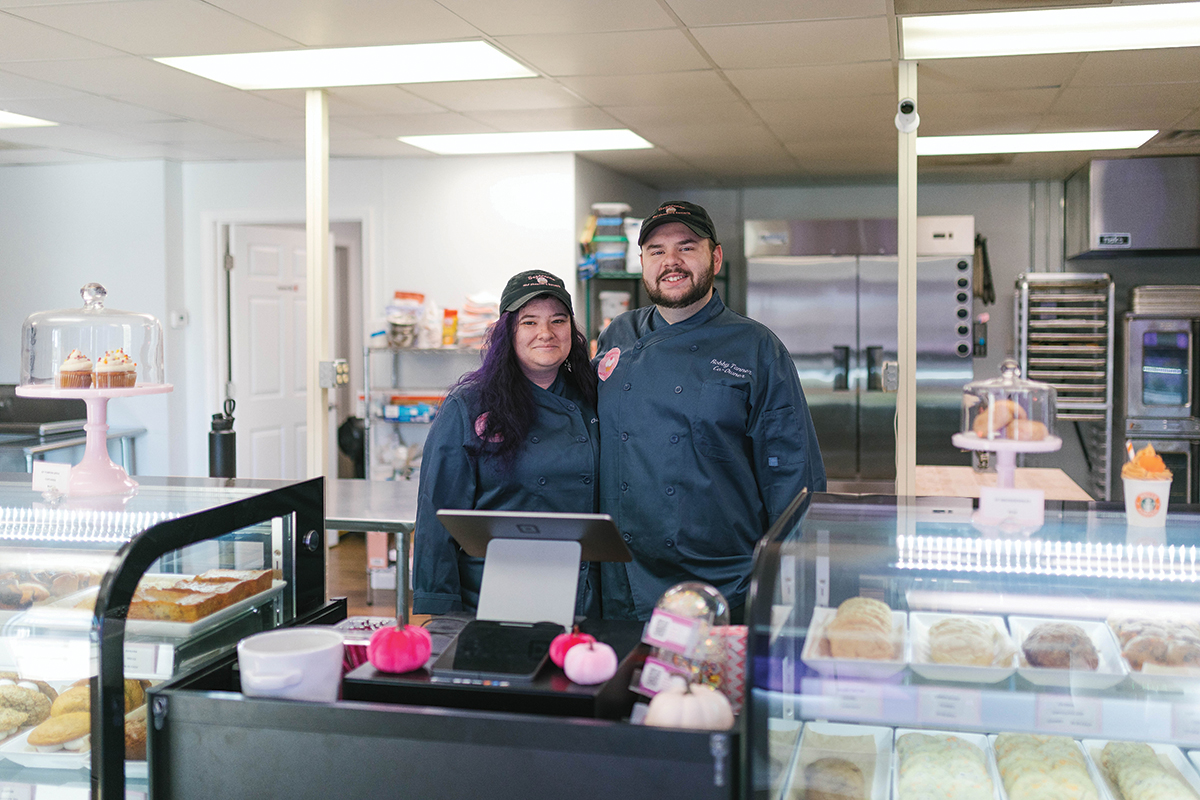
“It’s like touching a cloud.” Lori Denley at home with her rabbits. She’ll demonstrate the uses of their extra-soft fur at the upcoming Southeastern Animal Fiber Fair. Photo by Karin Strickland
Among animals known for their fiber, alpaca and sheep come first to mind, as well as goat for its cashmere. All have distinctive proteins and textures in their fur that make it particularly receptive to dyeing and weaving, even those of Angora goats. But the use of Angora rabbit fiber is less common.
As one of the oldest breeds of domestic rabbit, Angoras have astonishingly fast-growing coats — over twice the rate of the standard species. Classified as wool, their silky fibers are desirable in high-quality knitwear. The animal’s trademark soft hair is not only water absorbent but also easily absorptive for dyeing, and after being spun, can be knitted, crocheted, or woven. Often, Angora fiber is blended with Alpaca or another fine wool to increase its strength and elasticity.
Serendipity Farm in the High Country region of WNC is unique in both breeding and obtaining fiber from their in-house stock of French Angora rabbits. Lori Denley, founder of the farm along with her husband Travis, attests that raising them is much like raising any other breed. They require a dry, sheltered habitat safe from predators, and they subsist on high-quality feed and large amounts of water.
But because of the Angoras’ rapid hair growth, the central aspect of their maintenance is their coats’ mandatory removal, or harvesting, every three months, usually done with shears or a comb. “My French Angoras have fairly easy-care coats, as far as Angoras go,” Denley explains. “Usually about once a week, I comb them out or use a high-powered blower to free any knots or mats that have started to form.”
Interestingly enough, harvesting the Angora fiber is also paramount for the rabbits’ health. “If the excess fiber is left alone, it can form large knots or mats that will pull on the skin and create painful sores,” Denley describes. “If the rabbits ingest hair during grooming in quantities that are too large to pass, it will cause wool block, which can be fatal.” And so the Angora rabbit’s most desirable trait for harvesters and fiber manufacturers is also its most lethal.

Are Angora rabbits the new alpacas?
Photo by Karin Strickland
In addition to fiber animals and pets, Serendipity Farm raises rabbits for meat — a pioneer-days form of protein that’s been newly revived in today’s foodie culture. Still, it seems difficult to reconcile these multiple purposes that bear such opposing outcomes, especially with an animal so long beloved for its fairytale appeal (the Beatrix Potter books, The Velveteen Rabbit, the Easter bunny, etc.). So Denley has developed an important distinction. “Any breed of rabbit can be raised as meat, and many people raise French Angoras like mine as a dual-purpose breed,” she says. “I could harvest my Angoras for meat, [but] I prefer to raise a heritage meat breed for that purpose and keep my Angoras strictly as fiber animals and pets.”

Photo by Karin Strickland
To further the separation, she forms relationships with her fiber animals at an early age. “By the time they are large enough to be a meal, I’ve already been handling and grooming them regularly for weeks. By then, we are already friends. They even greet me at their doors for attention.”
All her Angoras have their own personalities, Denley continues. “I love them all, even though I do have my favorites. Sebastian will put his head down to be rubbed as soon as he sees me coming. Bogey and Bentley both insist on having recess during their grooming sessions so they can run through the barn chasing the cats and chickens. And Quinn likes to throw her water bowl around to get my attention if she thinks she is being neglected.”

Photo by Karin Strickland
She purposefully does not develop the same bond with the rabbits intended for meat. “My meat rabbits are much the opposite. They are not nearly as friendly as my Angoras, and I make a point to not get attached to them.” However, Denley acknowledges the importance of each of the rabbits’ lives and is careful to breed only as many litters as she is able to sell, while also keeping a few for herself.
“I love spending time with my rabbits. They are such beautiful and peaceful creatures. The sound of a rabbit chewing on its hay is such a soothing sound to me,” she adds. Denley looks forward to showcasing her French Angora rabbits at the upcoming Southeastern Animal Fiber Fair in Fletcher (the event typically showcases sheep, llama, and alpacas; exhibiting rabbits is a relatively new endeavor). “Seeing people’s faces light up when they pet an Angora for the first time is so wonderful,” she gushes. “Angora fiber is so soft that you almost can’t feel it with a gentle touch. It’s like touching a cloud.”

French Angoras enjoy a peaceful life on Serendipity Farms.
Photos by Karin Strickland
The Southeastern Animal Fiber Fair runs Friday, Oct. 26 and Saturday, Oct. 27 (9am-6pm) and Sunday, Oct. 28 (9am-4pm) at the Western North Carolina Agricultural Center, 1301 Fanning Bridge Road, Fletcher. Lori Denley of Serendipity Farms will show her Angora rabbits and give a fiber-spinning demonstration on the upper level of McGough Arena all three days at 11am and 1pm, and on Friday and Saturday at 3pm. For more information, see saffsite.org or serendipityfarmnc.com.



